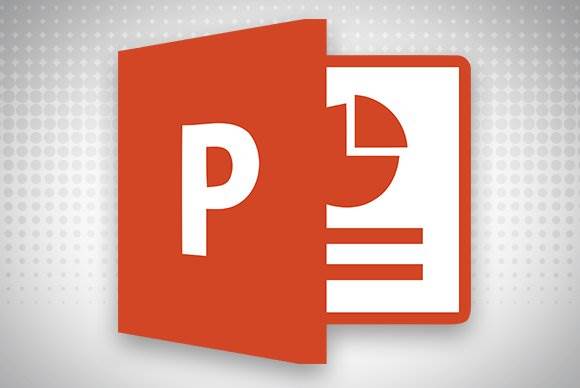Building motion into slideshows makes them come alive like no static images could ever hope to do.

Image: Rob Schultz
The best thing about PowerPoint is the animation. Building motion into slideshows makes them come alive like no static images could ever hope to do. It’s going to get even more interesting when PowerPoint gets 3D capabilities with the Windows 10 Creators Update due in early 2017.
In order to make things move in PowerPoint, your objects need a path (called a motion path) to travel from one location to another. Setting up the motion path used to be tedious, but now it’s a simple, straightforward procedure.
1. Create an object
First, you must either create an object or insert one from the online clip art collection or your hard drive.
1. Open PowerPoint, insert a new slide, and make the background color dark blue.
2. Select a star from the drop list, then hold down the left mouse button and drag the cursor down and over to draw the star on your screen.
3. Click the object—the star—you want to animate.
4. From the Animations tab click Advanced Animations > Add Animation.
5. Scroll down to the Motion Paths section, then choose a path from the presets, or select More Motion Paths from the list.
 JD Sartain
JD Sartain6. When the Add Motion Path dialog opens, scroll through the dozens of options and choose one. Slide the Add Motion Path dialog to the right and watch the star move around the screen as you select and try out different Motion Paths.
 JD Sartain
JD Sartain7. Once you choose a motion path, the path appears on the screen. If you want the path bigger, longer, smaller, or shorter, just grab the corner with the red arrow and drag the Motion Path in your chosen direction.
8. Next, click Animation Pane (on the Ribbon menu), and it opens on the right side of your screen. Click the highlighted animation (5-Point Star 3) inside the panel, then click the Play From button, which means play the animation from this point on.
9. Hover your cursor over the highlighted animation (5-Point Star 3) inside the panel to see the full description of this animation—in this case, “On Click, Stairs Down: 5-Point Star 3.”
 JD Sartain
JD Sartain10. After the animation plays, click the down arrow to the right of the 5-Point Star 3 animation to see the Timing and Effects Options submenu.
11. The motion path submenu opens on the Timing tab. You have several timing options to define on this screen:
Start options include On Click, With Previous, or After Previous. This means you can set the animation to begin on the click of the mouse, or with a previous animation that’s already running, or after a previously running animation.
Delay options are timed in seconds, which just means you can set the animation on a time delay clock for X number of seconds after the option you select above. For instance, if you choose After Previous (as the Start time for the animation), you could then set a Delay time of two seconds. This is very important if you are trying to time or match the audio to each slide.
Duration options are the time, length, and speed of the animation (in seconds). These options are very useful if something in your animation has to match the audio. For example, I used this once in a slideshow when I had to set the Duration/speed to Fast so the sound of the jingling bells would match the movement of the jingling bells.
 JD Sartain
JD SartainRepeat is the number of times you want the animation repeated in your slideshow. For example, in the original animation for the jingling bells, they only moved back and forth two times. I needed them to continue moving/jingling until the end of the slide, or else the bells would be stationary while the audio was still jingling.
Rewind When Done Playing is a checkbox. Select this if you want the animation to return to the beginning after it plays. This is also a useful tool if you want your animation to return to its original location after it plays—for example, in case you need the object returned to its original location for the next slide.
Triggers are options that allow you to choose which action will “trigger” or start the animation. Your choices are Animate as Part of a Sequence (the default), which starts the animation as part of the ongoing, active sequence; Start the Effect On Click Of (the named animation), or Start Effect on Play Of. In this example, it would be started when something else is played, such as an audio or video file.
 JD Sartain
JD Sartain12. The next tab on the Motion Path (Stairs Down) submenu is Effect. This submenu also has several options that affect your animation:
Path Locked or Unlocked mean that if you click the object and move it, the animation path moves with the object (Unlocked) or remains at its current location (Locked).
Smooth Start/Smooth End: You can have a full Smooth Start or a full Smooth End, but not both. For example, if the slider on Smooth Start is pushed to the end (5 seconds), the slider on Smooth End moves to 0 seconds. You can push them both halfway or one-third up and two-thirds down, but notice as you push one to the right, the other one adjusts to the left. What does this mean? It means that the beginning (or the end) of the animation will slow down and sort of slide into home plate in slow motion. If both are set to 0, then animation will run evenly at the speed you selected above in the Duration option.
Bounce End is a fun little feature that does just that: The object bounces at the end of the animation. For example, imagine that you throw a ball across the room and when it hits the floor, it bounces until it stops.
Auto Reverse is a great feature. You can set the animation to go up and then back down the stairs, or inside and then back outside the door. Remember how this camera technique was used in the silent films? Same concept.
 JD Sartain
JD SartainYou’ll also see options under Enhancements:
Sound makes the slideshow. If you don’t have a narrator, then sound effects or music are a must, or your audience will snooze. For Sound effects, click the down arrow beside the Sound field box, and then choose a sound from the list. Only .wav files are accepted for sounds attached to animations from this level.
 JD Sartain
JD SartainNOTE: To insert a narrator’s comments or music, from the Insert tab, click Audio, then choose Audio on My PC or Record Audio from the list. Navigate to your music or speech folder, select the appropriate file, then click Insert.
 JD Sartain
JD Sartain.
After Animation is another cool feature that provides options including Colors (and More Colors), Don’t Dim, Hide After Animation, and Hide on Next Mouse Click. If you choose a color, the object(s) in your animation will change to that color at the end. Don’t Dim means don’t fade it out into the background. Hide means hide the animation after it completes, or hide the animation when the user clicks the mouse.
Animate Text is only available if your animation includes characters, words, or sentences. Use the options, when you want the animation to affect one character or one word at a time. For example; say the animation is Turn Down and you choose By Letter. The word GREAT moves across the screen, then down the screen, one letter at a time. The next field box is for the percentage of delay between the letters, so the letters don’t all move at the same time.
 JD Sartain
JD SartainThe best way to learn how to create, manage, and manipulate animations and motion paths is to just open PowerPoint and play. Insert some basic shapes, add some fancy shape effects, and then add some motion paths and see what happens. PowerPoint is not as powerful as most animation-specific programs like Flash, Maya, or Adobe Animate, but for beginners, it does the job.
 JD Sartain
JD Sartain







